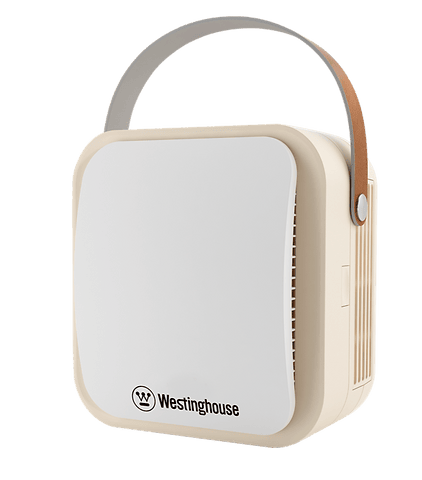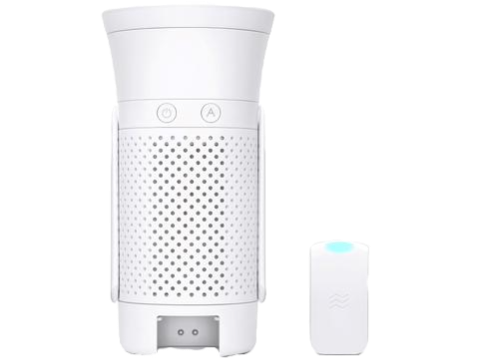What's In The Air?
- Fresh Air Matters
- Mar 14, 2023
- 4 min read
After a relatively warm winter here in North Texas, the Gulf Coast, and around most of the south, pollen is in full force.
Many people suffering from allergies have noticed they're getting worse each day. Tree pollen and cedar have been very severe. These allergens can cause respiratory problems, sneezing, wheezing, and red, itchy eyes—and among the most serious cases, allergy symptoms that have caused asthma flare-ups given that seasonal allergies are getting worse this year.
Why are allergies worse?
The mild winters we saw this past year are allowing for pollen-generating plants to blossom longer and earlier into the season. The amount of carbon dioxide in the air is also acting as fertilizer for these plants, leading to allergy flare-ups and other health issues associated with allergies and poor air quality both indoors and outdoors.
What are allergies?
Pollen is an allergic material that spread through the air and is produced by grass, trees, weeds, and blooming plants. When a person with allergies inhales pollen and other allergens their immune system perceives these contaminants as a danger and sends out signals that cause congestion, itchy eyes, a runny nose, and sneezing as well as issues like sinus pressure and allergic reaction making your allergy symptoms so bad each day. Allergy flare-ups can also cause respiratory health issues such as asthma and other breathing issues associated with poor air quality.
How to combat allergies
There are many ways to help combat the health issues associated with poor indoor air quality. Using over-the-counter medications is an option, however, it has been clinically proven that air quality is directly linked to your overall health. Your indoor air quality is affected by numerous factors such as dust, dirt, pollen, pet dander, mold, bacteria, and many more volatile organic compounds or VOCs from burning candles, DIY projects that include painting and woodwork, and even cooking certain foods. However, there are ways to help not only improve your indoor air quality but also maintain a healthy indoor environment by continually cleaning the air you breathe.
Step 1: Wash your car, inside and out, more often.
- Allergens enter your car through open doors and windows. As the allergy season ramps up, you will notice pollen collecting on your car. This pollen also attaches itself to your clothes and hair. As you enter your vehicle this pollen enters with you. Cleaning your vehicle, including vacuuming and cleaning the inside, will help keep the collection of allergens minimal and remove them completely with every clean.
Step 2: Replace your air filters every month.
- One of the most common reasons for poor indoor air quality is restricted airflow caused by the failure to regularly replace your air filters. Your air filters within your home are your first defense against the circulation of indoor airborne allergens. Allergens enter your home through open doors and windows. Also, allergens attach to your hair and clothing, as well as to pets. As you enter your home, these allergens release into your indoor air. Your filter uses electrostatic technology and one of the best ways to remove the allergens from your home, is to regularly replace your air filters. As the collection of allergens increases in your filters, and the electrostatic technology decreases, the allergens and pollutants release and collect within your air ducts, ultimately recirculating through your indoor air. Fresh Air Matters offers air filter replacement plans to residents of certain cities within the Dallas/Ft. Worth metroplex in which a FAM technician provides teh filters, replaces them for you, and cleans your return vents on the same day and time every 30-90 days. Never replace your air filters again. We do it for you!
Step 3: Clean and dust your home at least once a week, including vacuuming.
- As you enter your home, allergens enter with you. Allergens attach themselves to your hair, and clothing, and even collect on your pets. Cleaning, including vacuuming and dusting your home captures and removes those allergens. Vacuuming, however, may not remove all of the allergens.
Step 4: Have your carpets and upholstery professionally cleaned.
- Vacuuming your carpets and upholstery doesn't remove all of the allergens and pollutants. In fact, some allergens become agitated and circulate through your air, settling in other places in your home. As you enter your home and sit on your sofa, the allergens stick to the carpet and upholstery fibers. The only way to truly remove these allergens is to have your carpets and upholstery professionally cleaned. The machinery used in our professional services is proven to agitate and remove allergens, pollutants, and other contaminants that negatively affect your air quality and overall health.
Step 5: Utilize an air purifier in your home and car.
- Fresh Air Matters offers air purifiers from top-brand manufacturers like Air Doctor, Austin Air Systems, Wynd, Westinghouse, Trusens, Molekule, Medify, and much more. These air purifiers are clinically proven to capture, remove, and eliminate indoor airborne allergens, pollutants, and contaminants. Through multiple filters including carbon and HEPA, UV lights, and app-enabled technology, our air purifiers not only help create a healthy indoor environment by purifying the air you breathe, but with the specific brand apps, you are able to see a trend in what the most common allergens are in your home and how to rid your home, office, classroom, and more from the allergens, pollutants, and contaminants negatively affecting your IAQ and overall health.
Fresh Air Matters
We have revolutionized the indoor air quality industry by offering local plans and services, as well as top-brand air purifiers that are all proven to capture, remove, and eliminate indoor airborne allergens, pollutants, and contaminants negatively affecting your indoor air and overall health. As the allergy season begins to bring pollen and other allergens into your home and car causing allergy-related health issues, allow Fresh Air Matters to help you clean your air.
.png)
















